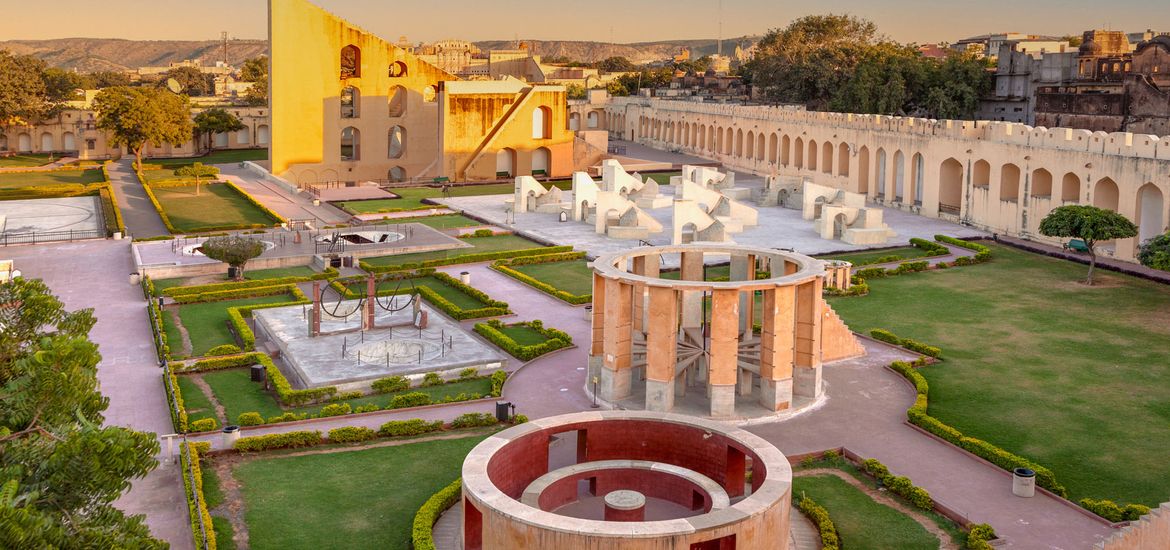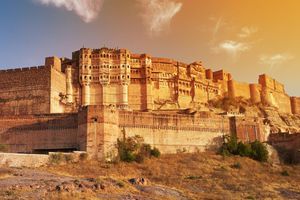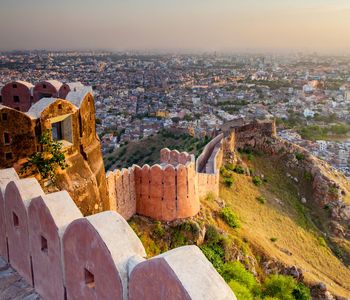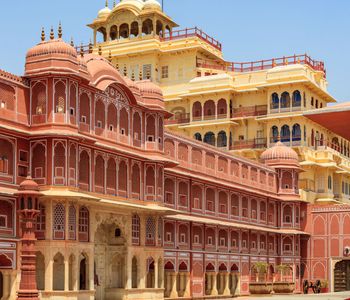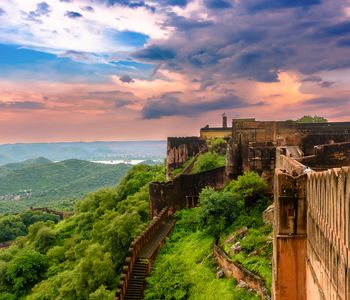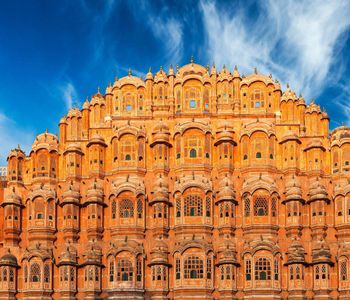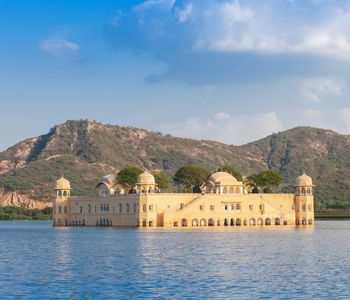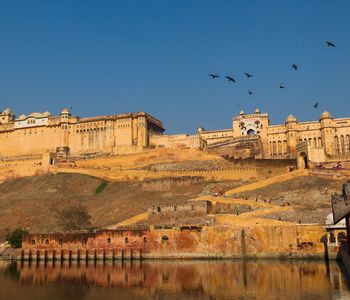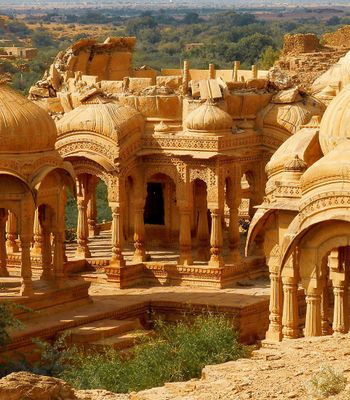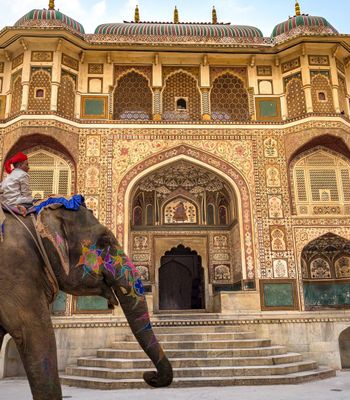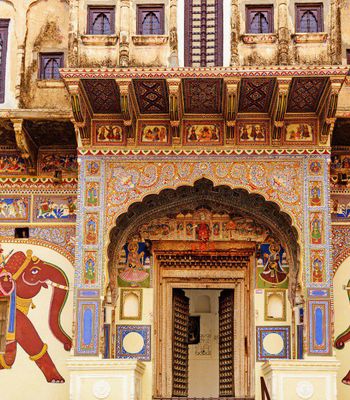Jaipur’s celestial masterpiece, Jantar Mantar, was built in the early 18th century. This UNESCO World Heritage site is not just an observatory but a testament to India’s extraordinary astronomical prowess.
Home to 19 massive instruments, including the world’s largest stone sundial, Jantar Mantar offers a fascinating glimpse into how ancient scholars decoded the cosmos. More than just a historical landmark, it’s a living marvel where the mysteries of the universe meet Rajasthan’s rich cultural heritage, making it an unmissable destination for travellers and science enthusiasts alike.
Maharaja Jai Singh II’s Astronomical Dream
From 1724 until 1735, Maharaja Jai Singh II commissioned the construction of Jantar Mantar in Jaipur. The observatory achieved its purpose by uniting advanced astronomical studies with improved timekeeping capabilities.
Five Jantar Mantars built by mathematician and astronomer Jai Singh II exist throughout India, with sites in Jaipur and four additional locations in Delhi, Ujjain, Mathura, and Varanasi. The Jaipur site showcases the Samrat Yantra as the largest stone sundial among all five Jantar Mantar locations.
Jantar Mantar played a key role in the scientific history of Rajasthan. The observatory was crucial for compiling astronomical tables and predicting celestial events. Its significance extended beyond its time, advancing both astronomy and mathematics throughout India.
The Architectural Brilliance of Jantar Mantar
Beyond its scientific and cultural significance, Jantar Mantar is a remarkable architectural masterpiece. The observatory’s instruments, meticulously crafted from stone and brass, exhibit a seamless blend of architectural influences, including Hindu, Islamic, Persian, and European styles.
Jantar Mantar’s instruments are monumental in scale, with many towering over visitors, emphasising their grandeur and purpose. The Hindu chhatri (small cupola), for example, is a platform for astronomical announcements, including eclipse predictions and monsoon forecasts.
Floral motifs, geometric patterns, elegant calligraphy, and engraved inscriptions adorn these instruments, enhancing their aesthetic appeal. The design of Jantar Mantar is carefully aligned with the cardinal directions, following Vastu Shastra, ensuring both its functional precision and visual harmony.
Must-See Attractions of Jantar Mantar
Here are the top attractions one can not miss when planning a trip to Jantar Mantar, Jaipur:
- Vrihat Samrat Yantra: Renowned as the world’s largest sundial, this 27-meter-high instrument measures time with an accuracy of two seconds. Its triangular gnomon, aligned with Jaipur’s latitude, casts a precise shadow to calculate local time.
- Laghu Samrat Yantra: A compact version of the Vrihat Samrat Yantra, this sundial measures time with an accuracy of twenty seconds. Its inclined ramp points toward the North Pole, ensuring precise solar time calculations.
- Ram Yantra: Found only in Jaipur and New Delhi, this unique instrument consists of two cylindrical structures with a central pole used to measure the altitude and azimuth of celestial bodies.
- Jaya Prakash Yantra: Featuring two bowl-shaped structures, this instrument tracks the movement of celestial bodies through the projection of their inverted images on marble slabs. It helps determine elevation, azimuth, and hour angles.
- Chakra Yantra: This ring-shaped instrument consists of four semicircular arcs that determine the Sun’s declination and hour angle four times daily.
- Digamsa: A pillar enclosed by two concentric circles, Digamsa is used to predict sunrise and sunset timings accurately.
- Nadivalaya: With two circular plates facing north and south, this instrument represents the Earth’s hemispheres. Its structure remains parallel to the equatorial plane, allowing precise time measurements.
- Karnti Vritya: This specialised instrument measures the solar sign of the Sun throughout the day, providing valuable data for astrological and astronomical studies.
Lesser-Known Facts about Jantar Mantar
Jantar Mantar was inspired by Ulugh Beg’s Observatory in Samarkand and the Maragheh archaeological site, designed to study Vedic Sanskrit texts and European astronomical publications.
The name Jantar Mantar originates from Sanskrit, where “Jantar” means instrument and “Mantrana” means calculations, symbolising its function as a scientific measuring device.
A Celestial Experience of Light and Sound
Jantar Mantar presents its guests with an engaging sound and light evening show that reveals the heritage of the astronomical observation site. This celestial experience allows the visitors to learn about the history of the Pink City, its ruler, Maharaja Jai Singh II, and the instruments.
Chasing the Perfect Moment: Best Time to Visit
A visit to Jantar Mantar in Jaipur is best experienced between October and March because the cool weather makes sightseeing comfortable in Rajasthan. The daytime climate during this season records pleasant temperatures, enabling visitors to study every detail of Jantar Mantar without the scorching heat.
Jantar Mantar showcases its most captivating features during the midday when the sun stands directly above. The specific placement of solar instruments during noontime allows for improved scenic observations of Samrat Yantra and other astronomical instruments.
Navigating Your Journey to Jantar Mantar
By Air
You can reach Jantar Mantar via Jaipur International Airport (JAI), 11.6 kilometres from the site. When you arrive at the airport, you can find either taxis for hire or choose local transportation to reach the observatory.
By Train
Jantar Mantar can be reached through Jaipur Junction (JP), which is only 4 kilometres away. Travellers can quickly get to Jantar Mantar using either auto-rickshaws, taxis, or local buses, all of which can be found throughout the station area.
By Road
Jaipur is easily accessible by road, with well-maintained highways connecting it to major cities like Delhi, Agra, and Mumbai. A road trip to Jantar Mantar is not only feasible but also offers a scenic journey, making it an ideal day-trip destination.
A direct bus departs from JP Railway Station and arrives at Badi Chaupar, just a short 8-minute walk from Jantar Mantar. Buses run every 15 minutes, operating daily, with a journey time of approximately 11 minutes.
Taxis and auto rickshaws are widely available throughout Jaipur, offering a convenient and direct way to reach Jantar Mantar.
Whether you're a curious traveller, a history enthusiast, or an astronomy lover, this celestial marvel in Jaipur promises an awe-inspiring journey through time and space. As the sun casts ever-changing shadows on its grand instruments, Jantar Mantar continues to whisper the secrets of the cosmos, waiting to be explored.
